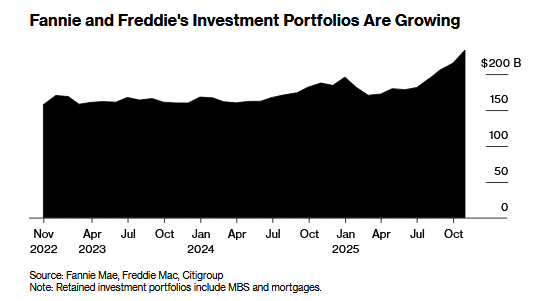Overview: The capital markets have been choppy as pre-existing positioning meets new thoughts on the implications of a second Trump administration. The dollar has found better footing today after giving back a chunk of Wednesday's gains yesterday. The yen is an exception, but it is not exception that the dollar trades heavier against the yen as the US 10-year yield drifts lower. On the week, the most G10 currencies are holding on to gains against the dollar. Here the euro is the notable exception, off about 0.6%, and is thought to be the most at risk.
Equities are mostly lower today. The market did not seem impressed with the local debt swap initiative from Beijing, and the CSI 300 fell 1%. Europe's Stoxx 600 is giving back yesterday's 0.6% gain in full, and US index futures are slightly softer. Bonds are bid. European 10-year benchmark yields are 4-6 bp lower, which unwinds most of the backing up seen earlier this week in the UK, Germany, and France. After recovering above $2700 yesterday, gold has come back offered. It found support near $2680, but it does not look secure. Yesterday's low a little above $2643. December WTI is unwinding yesterday's gains and more. Still, around $71, it is up 2.4% on the week.
Asia Pacific
Japanese household spending fell 1.1% year-over-year in September, which was not as weak as feared. Japan reports Q3 GDP at the end next week. It will not be pretty. The median forecast in Bloomberg's survey is for a 0.1%. Recall that the struggling eurozone economy grew by 0.4% in Q3. Personal consumption is seen slowing from 0.9% in Q2 to 0.2% in Q3, despite the stronger wage growth. Business spending may have contracted by 0.3% after growing by 0.8% in Q2. For its part, China will report its October CPI and PPI tomorrow. October CPI may tick up to 0.5% from 0.4%, perhaps on the back of the holiday-related activity. Deflation among producer price will persist, though the pace may have slowed for the first time in four months, helped by rising commodity prices.
In yesterday's corrective action, the US 10-year yield pulled back 8-9 basis points after 16 bp jump on Wednesday. Similarly, after spiking 2% higher Wednesday, the dollar settled around 1% lower against the Japanese yen. It peaked near JPY154.70 and pulled back toward JPY152.85 and JPY152.15 today. Key support is in the JPY151.30-65 area. The Australian dollar was impressive. It fell to around $0.6515, near a three-month low in the initial reaction to the US election results but it closed at only a three-day low. Yesterday, it recovered to almost $0.6690, a new two-week high, and in so doing, met the (38.2%) retracement of the leg down from late September. It is offered today and returned to $0.6625. A convincing break of this area would weaken the technical tone going into next week. The greenback surged against the offshore yuan on Wednesday and settled above the 200-day moving average for the first time in three months. The recovery of the yen coincided with the recovery of the yuan. The dollar peaked slightly above CNH7.2130 yesterday and fell to CNH7.1415. It has bounced back today to CNH71910 but appears to have stabilized around CNH7.17. PBOC dollar fix was watched closely today after it was lifted by nearly 1% yesterday. Today's reference rate was set at CNY7.1433 (CNY7.1659).
Europe
The media says German Chancellor Scholz called for a snap election after firing Finance Minister Linder, a post given to the FDP to form the tripartite governing coalition. But this does not seem to be the best characterization of it. Scholz is not calling for a snap election, and that is precisely the rub. He does not want to have an election until March. That is not "snap". That brings forward the election by six months. The opposition leader, Merz, who appears to be supported by nearly twice the number of Germans as Scholz wants vote of confidence next week and an election as soon as mid-January. While it is understandable that the CDU/CSU want to have elections as soon as possible, it is less clear why Linder and the FDP do. The FDP's public support has waned, and it poll numbers warn that it may fail to achieve the 5% support required for Bundestag representations. You want to see a snap election, look at Ireland. The parliament was dissolved today to prepare for an election toward the end of the month. An election is required by the end of Q1 25. As widely expected, the Bank of England delivered its second quarter-point cut in the cycle. It warned that the government's budget would boost inflation by around 0.5% by Q3 25. Governor Bailey said that if the economy evolves as expected, interest rates can gradually fall. The market took this to mean less of a chance of cut next month, and the odds of a quarter-point cut at the December meeting was trimmed to about a 20% chance down from around 33% before the BOE meeting.
The euro surpassed the (50%) retracement of Wednesday's sell-off yesterday, found near $1.0810. It peaked at $1.0825. It has retreated to $1.0760 today and has barely spent any time today above yesterday's settlement (~$1.0805). The euro closed near $1.0835 a week ago. Sterling briefly traded above $1.30 yesterday, recovering slightly more than three-quarters of Wednesday's losses. However, it has held below that threshold today. The downside has been limited to $1.2935. Sterling settled near $1.2925 last week. Barring a loss of this, sterling would post its first advancing week since the end of September.
America
As widely expected, the Federal Reserve delivered a quarter-point cut in the Fed funds target rate to 4.50%-4.75%. At the press conference, Fed Chair Powell resisted being pulled into a discussion of the next administration's policies. He was similarly circumspect about the outlook for the December meeting. The odds of another quarter-point cut are near 66%, down from around 82% a week ago. In the current context, today's September consumer credit report and the preliminary November University of Michigan survey are hardly even distractions. Meanwhile, with the US two-year premium over Canada continuing to rise (now 113 bp) to a new 27-year high. It may take more than a strong Canadian employment report to bolster the Canadian dollar. The 112k surge in full-time positions reported in September is unlikely to be repeated and the unemployment rate is seen ticking up to 6.6% (from 6.5% in October and 5.7% in January. Wage growth is expected to be steady for permanent workers at 4.5%. The swaps market is discounting a little more than a 50% chance of another half-point cut when the central bank meets again (December 11), practically unchanged from a week ago. Brazil's central bank’s 50 bp hike on Wednesday would seem to render moot the IPCA CPI, which is expected to have risen to almost 4.75% in October from near 4.40% in September. Brazil's CPI bottomed slightly below 3.70% in April.
The Canadian dollar recovered nearly fully from Wednesday's losses. The US dollar's low on Wednesday was around CAD1.3820 and yesterday's lows was closer to CAD1.3840. The pullback was even more impressive give that the US two-year premium edged up to a new multiyear high to 115 bp. The US dollar is catching up today, returning to CAD1.3900. The greenback settled last week around CAD1.3950. It is poised to snap a five-week advance. Despite fears that President-elect Trump would be particularly negative for Mexico, the dollar settled slightly lower Wednesday and dropped almost 1.4% yesterday. The greenback peaked on Wednesday near MXN20.8080 and fell to about MXN19.7620. It settled below the 20-day moving average for the first time since October 14. There has been no follow-through today, and the US dollar has been confined to yesterday's trough. The peso has appreciated 2.25% this week. Support for the dollar is seen in the MXN19.50-60 area.
Tags: #USD,Bank of Canada,Bank of England,China,consumption,Currency Movement,Featured,FOMC,Germany,Japan,newsletter


































